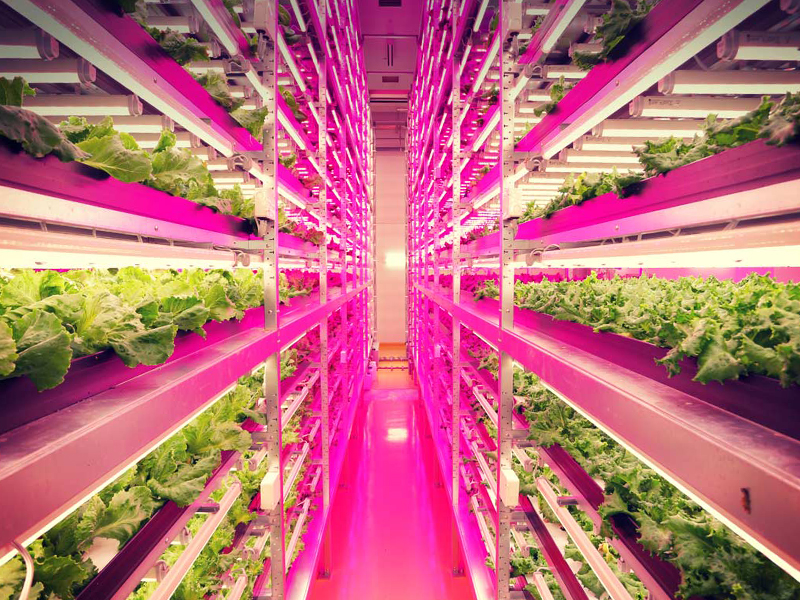We’ve discussed it several times throughout the course, and I’ve even discussed it in my very first blog post, but it bears repeating that innovation is essential to future sustainability. One example of such innovation is incredibly interesting to me and it is urban indoor farming. While several groups are planning such farms, the world’s largest indoor farm already exists in Japan and is toted as 100 times more productive than traditional farming methods. Custom LED lighting helps plants grow two times faster, shortening the day/night cycle. The plants grow on a series of shelves with highly regulated temperature and humidity.
While this lives on the opposite end of the spectrum from locally grown foods, it’s potentially more in line with current projections of overpopulation and growing urban areas. But with other innovations in food not always living up to expectations (GMO’s), it will be interesting to see whether indoor farmed foods will have different genetic properties making them more or less healthy. It is also questionable whether production of the special LED lightbulbs, the shelving units and the massive buildings themselves will be sustainable. In the particular case above, the farm is housed in a factory building left vacant after the 2011 earthquake and tsunami. I am sure there are numerous buildings like this, especially in other areas affected by natural disasters, which could become much-needed local producers of fresh produce. Other indoor farming firms suggest utilizing existing public basements, as well, while some designers are interested in creating new vertical structures.
Examples of innovation like this are not only usually fascinating projects but they are key in creating discussion around climate change, sustainability and the environment. When surfing through environmental news online, I use a variety of sources like The Guardian or Reddit, and the discussions usually surround environmental innovation rather than much of what we discuss in class, including partnerships or small projects, which have much less viewership online. I find it quite interesting that the sustainability conversation is potentially biased towards the more novel solutions rather than the best solutions – what do you think?


Hey Connor,
Thanks for your post! i am totally agree with you that innovation is the key to address environmental and sustainable issues. But i also think those materials we learned in class such as partnership, 4C, some models and matrices, are more like theoretical concepts and tools to scrutinise those initiatives. Even though innovative solutions sound better and more fancy than the best one sometime, i stills think we need to back to reality to consider those innovative solutions are applicable or not in order to find a 「Perfect」solution.
Thanks!
Paul